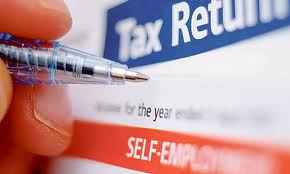 Self employed borrowers have always had to contend with more extensive paperwork requirements and underwriting scrutiny than the typical salaried employee. The underlying rationale for a more careful examination of a self employed borrower’s situation is based on the fact that self employment income can vary dramatically from year to year and, in addition, many small business owners wind up failing.
Self employed borrowers have always had to contend with more extensive paperwork requirements and underwriting scrutiny than the typical salaried employee. The underlying rationale for a more careful examination of a self employed borrower’s situation is based on the fact that self employment income can vary dramatically from year to year and, in addition, many small business owners wind up failing.
Current FHA underwriting guidelines consider a borrower to be self employed if the borrower owns 25% or more of a business, defined as a sole proprietorship, a limited liability or “S” corporation, a partnership or a corporation.
If a borrower is deemed to be self employed under FHA guidelines, the following documentation is generally required for mortgage application purposes.
- Dated and signed tax returns, including all applicable tax schedules for the last two years.
- A year to date profit and loss statement plus a balance sheet for the period of time from the business tax year’s ending date.
- For corporations and “S” corporations, the borrower must submit a business credit report.
- Proof of the percentage of ownership if the borrower owns part of a corporation.
Borrowers who are self employed are subject to the following FHA guidelines during the underwriting process.
- The borrower’s income will be considered stable is the borrower has been self employed for two or more years. The FHA takes the view that there is a high probability of failure for self employed borrowers who have not been in business for at least two years. Borrowers who have been self employed for less than two years may be approved if the borrower has had formal training or education for the business that he/she is in or if the borrower previously had successful employment in the same field related to the current self employment.
- Income should be increasing over the past two years. If the income trend is declining, the FHA will use the most recent and lower income levels for qualification purposes.
- To determine if the financial strength of a self employed individual, the FHA examines not only the source of a business’s income but also the general economic outlook of similar businesses in the geographic area of the business. If a business is showing a large decline in income, the applicant will be turned down even if FHA guidelines are met based on the current income of the business.
Given the economic uncertainty facing many small businesses, the FHA is imposing new guidelines for self employed FHA borrowers, effective April 1, 2012. In the past, the FHA usually required a profit and loss statement and balance sheet if more than 7 months had passed since the business’s ending tax year.
The new FHA guidelines for the self employed will now require that the borrower provide a profit and loss statement and a balance sheet if more than three months have passed since the fiscal or year end date of the last tax return. The FHA is allowing no exceptions to this new rule. In addition, if the qualifying income exceeds the average of the prior two years tax returns, the borrower must provide an audited profit or loss statement or a signed quarterly taxed return that was filed with the IRS.